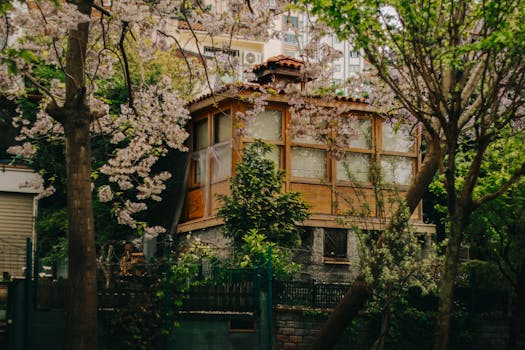
Urban Green Spaces: The Future of Outdoor Living in European Cities by 2025
Urban Green Spaces are becoming increasingly important in European cities, and for good reason. Urban Green Spaces provide numerous benefits, including improved air quality, reduced noise pollution, and enhanced biodiversity. Moreover, they offer a peaceful escape from the hustle and bustle of city life, promoting mental and physical well-being.
Introduction to Urban Green Spaces
Urban green spaces refer to areas of vegetation, such as parks, gardens, and green roofs, that are integrated into the urban landscape. These spaces can be found in various forms, from small gardens and parks to large urban forests and green corridors. The importance of urban green spaces cannot be overstated, as they provide a wide range of ecological, social, and economic benefits.
Benefits of Urban Green Spaces
The benefits of urban green spaces are numerous and well-documented. Some of the most significant advantages include:
- Improved air quality: Urban green spaces help to remove pollutants from the air, improving overall air quality and contributing to a healthier environment.
- Reduced noise pollution: Vegetation and trees in urban green spaces can act as a natural sound barrier, reducing noise pollution and creating a more peaceful environment.
- Enhanced biodiversity: Urban green spaces provide a habitat for a wide range of plant and animal species, helping to maintain and enhance biodiversity in urban areas.
- Increased property values: Well-maintained urban green spaces can increase property values, making them a valuable asset for homeowners and businesses.
- Improved mental and physical health: Spending time in urban green spaces has been shown to have a positive impact on both mental and physical health, reducing stress and improving overall well-being.
European Cities Leading the Way
Many European cities are at the forefront of urban green space development, recognizing the importance of these areas for both residents and the environment. Some notable examples include:
- Stockholm, Sweden: Known for its innovative approach to urban planning, Stockholm has incorporated numerous green spaces throughout the city, including the famous Royal National City Park.
- Copenhagen, Denmark: Copenhagen has implemented a range of initiatives to increase green spaces, including the creation of green roofs and walls, and the development of urban parks and gardens.
- Amsterdam, Netherlands: Amsterdam has a long history of urban green space development, with numerous parks, gardens, and green corridors throughout the city.
Challenges and Opportunities
While urban green spaces offer numerous benefits, there are also challenges associated with their development and maintenance. Some of the key challenges include:
- Space constraints: Many European cities face significant space constraints, making it difficult to create new green spaces.
- Funding: Developing and maintaining urban green spaces requires significant funding, which can be a challenge for cities with limited budgets.
- Community engagement: Encouraging community engagement and participation in urban green space development is crucial, but can be difficult to achieve.
Despite these challenges, there are many opportunities for urban green space development in European cities. These include:
- Innovative design: New technologies and design approaches can help to create urban green spaces that are both functional and aesthetically pleasing.
- Community-led initiatives: Community-led initiatives can help to drive urban green space development, promoting community engagement and participation.
- Partnerships and collaborations: Partnerships between cities, businesses, and organizations can help to secure funding and expertise for urban green space development.
Conclusion
In conclusion, urban green spaces are a vital component of sustainable and livable European cities. By recognizing the importance of these areas and addressing the challenges associated with their development, we can create a better future for both residents and the environment. As we move forward, it is essential that we prioritize urban green space development, incorporating innovative design, community engagement, and partnerships to create thriving and sustainable cities.






